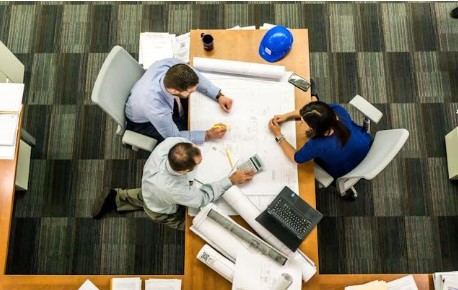When you think about building or renovating a home, the first things that come to mind are usually cost, design, and timelines. What often gets overlooked is how the choices made during construction affect the environment, your health, and even your long-term savings. Traditional building methods can waste resources, create more pollution, and lead to higher energy bills down the road. If you’ve ever worried about whether your home will be efficient, safe, and durable, then sustainable construction practices may be the answer you’re looking for.
By focusing on methods that reduce waste and improve efficiency, you can enjoy a home that’s both eco-friendly and cost-effective.
1. Energy Efficiency with Blown-In Insulation
One of the biggest benefits of sustainable construction is energy savings. Using blown-in insulation is a great example of how green building practices make homes more efficient. This type of insulation fills even the smallest gaps in walls and ceilings, reducing air leaks that cause heating and cooling systems to work harder.
When your home holds its temperature better, you spend less on energy bills and feel more comfortable year-round. Not only does this save you money, but it also reduces the strain on power plants, which helps cut down on pollution.
2. Smooth Construction Project Coordination
Sustainability in construction is not just about materials; it’s also about how projects are managed. Good construction project coordination makes sure everything runs efficiently, with less waste of time and resources. When workers and suppliers are properly scheduled, there’s less downtime, fewer mistakes, and less unnecessary material use.
This organized approach also means fewer delays and reduced costs, which benefits you directly. On top of that, efficient coordination minimizes the environmental impact of a project by cutting down on excess fuel use and material disposal. A well-planned project is greener and smoother from start to finish.
3. Healthier Indoor Environments
Sustainable construction also focuses on the quality of the air inside your home. Traditional building methods sometimes use materials that release harmful chemicals, which can affect your health over time. Eco-friendly practices prioritize low-toxicity paints, adhesives, and finishes that improve indoor air quality.
This means fewer allergens and fewer pollutants in your living space, creating a healthier environment for you and your family. The result is a home that feels fresher, safer, and more comfortable to live in every day.
4. Lower Long-Term Costs
At first, sustainable construction can seem more expensive, but over time it usually pays for itself. From energy-efficient lighting and appliances to water-saving fixtures, the savings add up. By reducing your monthly bills, you can recover the initial investment faster than you might expect.
Professionals who specialize in sustainable building also make sure systems are designed to last longer, which cuts down on repair and replacement costs. In the long run, this approach saves you both money and hassle.
5. Environmental Protection
Another clear benefit of sustainable construction is its positive impact on the environment. Green building practices reduce waste, save water, and lower carbon emissions. For example, recycling construction materials and using renewable resources like bamboo or reclaimed wood helps reduce the demand for raw materials.
These small choices add up to a much larger impact on protecting forests, reducing landfill waste, and slowing down climate change. When you choose sustainability, you’re not just building for yourself; you’re contributing to a healthier planet for future generations.

